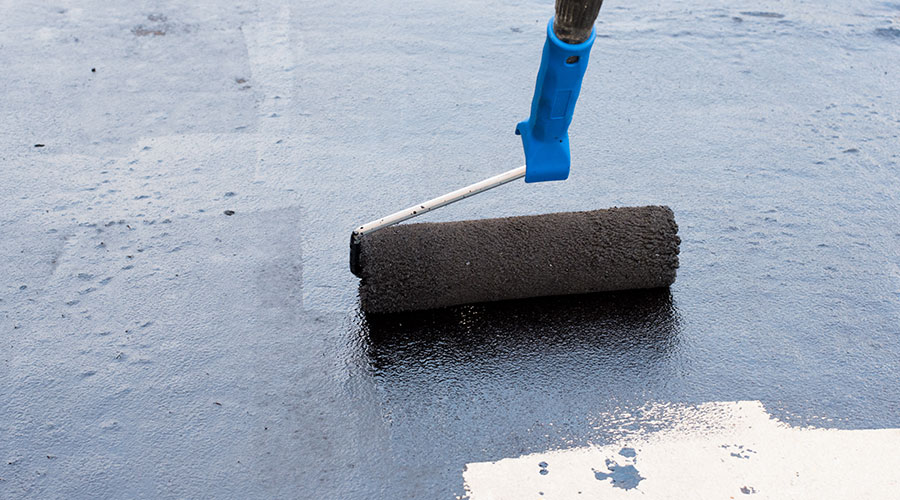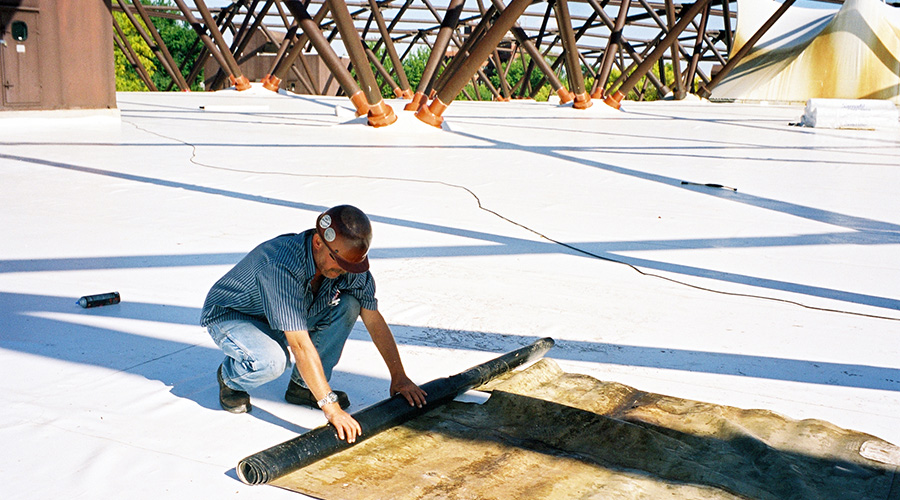 Before providing a warranty, roofing manufacturers typically require the contractor to submit the intended system to the manufacturer for review.
Before providing a warranty, roofing manufacturers typically require the contractor to submit the intended system to the manufacturer for review.Roofing Warranties Provide Course of Action, Remedy In Case of Problems
Third of a three-part article explaining everything FMs ever wanted to know about roofing warranties.
A warranty will stipulate exactly what remedies you may seek if there is a problem. Some will limit the remedy only to bringing the roof back to a watertight condition. This can mean only patching is covered, no matter how bad the system is. It may not cover items like wet insulation or rotted wood; as long as the roof no longer leaks, the warranty provisions are satisfied. Furthermore, some manufacturers retain the right to solely decide whether the leak is covered or not and will charge the owner back for the site visit if the leak is determined by the warranty holder not to be a covered condition.
Remember, the warranty is a contract, and like most business contracts, the terms can be negotiated. If you do negotiate out some of the more unacceptable clauses, be sure the changes are made by someone authorized by the company to make these changes and sign off on them.
Another key point: Be sure that the warranty form is made out in favor of the building owner, not the contractor, management company, or any individual.
Building owners often ask whether they should obtain a warranty and what length is best to get. Because warranties can help with catastrophic failures, it is generally worthwhile to obtain both a roofing-contractor and a materials-manufacturer warranty. The roofing contractor warranty should generally not be longer than five years since most installation defects show up within the first three. Paying for a warranty longer than that gives diminishing returns. Any clauses requiring the contractor to be hired to provide the maintenance should be negotiated out of the contract. If the roof is asphalt-based, include a rider that the roofer will fix any and all blisters that occur within the first five years. This is because almost all asphalt-based manufacturers exclude blistering from their covered issues.
Even if a roof is designed for a 20-year service life, it’s probably best to go with a 15-year, no-dollar-limit, labor and materials warranty from the roofing materials manufacturer. Longer term warranties are more warm blankets for owners to give them a sense of security than they are useful. Warranties longer than 15 years are expensive and difficult to collect on due to normal aging, maintenance issues, and lack of stipulated leak notifications.
Certificates get lost over time, making collection even more elusive. Long term warranties are used as sales tools by roofing materials manufacturers since they know there is little chance of an owner collecting on them after that many years. The list of exclusions and limitations of liability on the warranty can make it virtually impossible for you to collect on it but they can sell you one anyway and make you feel good about their system.
Installation and maintenance matter more
Recommending the shorter warranty life also is an acknowledgement that the service life of a roof has very little to do with the warranty length. A long lasting, serviceable roof has everything to do with having a knowledgeable and experienced consulting architect or engineer design the roof and observe its installation, selecting a competent and qualified roofing contractor to install it, and having a dedicated and organized building owner to maintain it. Even the National Roofing Contractors Association has stated that the best way to assure a well-installed roof is to have an independent observer watching the installation full time. Using all three legs of a stool can result in never even having to dust off the warranty certificate because you can feel confident that you are getting the most appropriate roof for your building and that it will last as long as its design life was intended.
A final word of advice: You may not need to get a warranty on your roof if you have it designed, installed, and maintained properly. If you do decide to get one, read a specimen copy very closely prior to contracting for the roof and be sure to review all of the fine print. Have your lawyer also read it and together go over the limits of liability, the list of exclusions and the owner’s responsibilities under the warranty to be sure you understand what you can and cannot do, what you must do, and what you can and cannot have.
Warranties can provide assurances to the owner that the roof will perform as intended, but only if you read them first.
Karen L. Warseck, AIA, LEED AP, is a registered architect and president of Building Diagnostics Associates, a Hollywood, Fla., architecture firm that specializez in investigating the causes of cracks and leaks in roofs and walls of existing buildings and designing remedial construction to fix them. She is a contributing editor for Building Operating Management. She can be reached at kwarseck@buildingdiagnostics.com.
Email comments to edward.sullivan@tradepress.com.
Related Topics:














